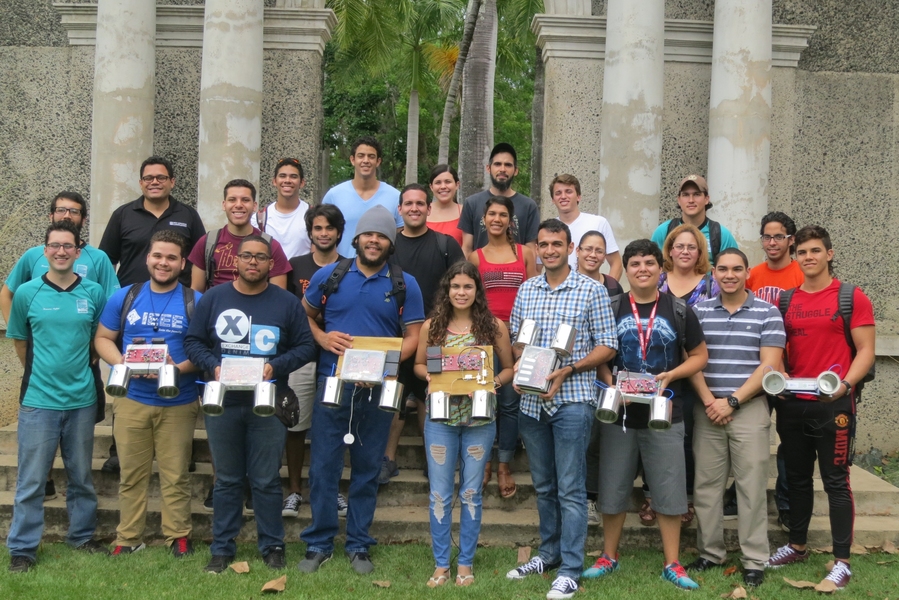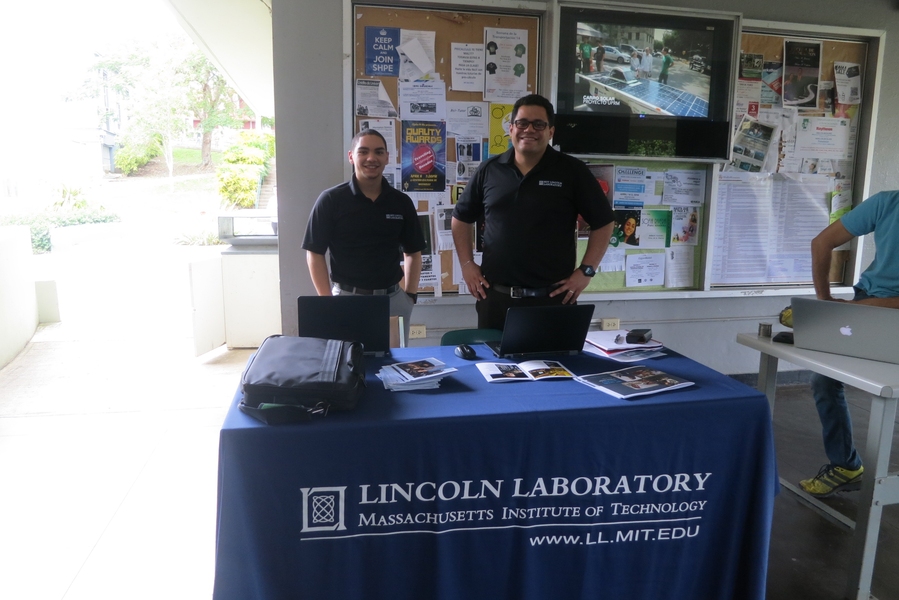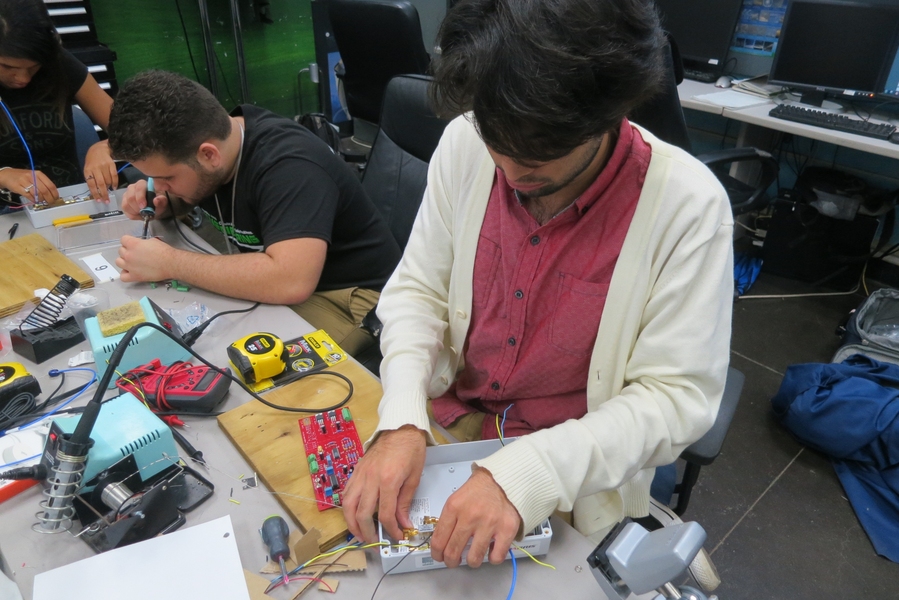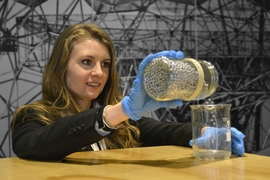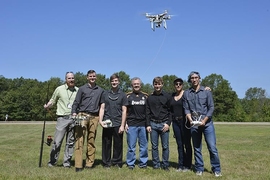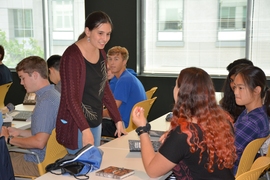The MIT Lincoln Laboratory Radar Introduction for Student Engineers (LLRISE) program has now reached as far as the coastal campus of the University of Puerto Rico at Mayagüez (UPRM). A group of undergraduate students at UPRM were the first at their school to participate in the LLRISE workshop held April 1-3. Adapted from the full two-week course developed by Lincoln Laboratory researchers for high school seniors, the workshop taught students how to build and test small radar systems.
Lincoln Laboratory technical staff members Nestor Lopez and Juan Brunet Navarro teamed up to bring LLRISE to UPRM. "Overall, it was a very demanding workshop for the students. I am very pleased that all of the students attended all lectures and actively participated," Lopez said. "I hope the students realized how simple concepts can be leveraged to build useful and interesting systems."
Lopez and Brunet Navarro have supported past outreach efforts at the laboratory, and hoped to spread LLRISE across other institutions. The decision to bring the workshop to UPRM was easy — both Lopez and Brunet Navarro earned their undergraduate degrees at UPRM and have maintained close ties to the faculty there. They also felt the institution would benefit from the program. "As an UPRM graduate, I thought this workshop would be of interest to students and faculty there since they have a strong applied electromagnetics program," said Lopez. The UPRM IEEE Electromagnetics Council (EMC) helped to organize the logistics of the workshop.
More than 20 students, mostly juniors and seniors studying electrical and computer engineering, spent the weekend immersed in the curriculum. Lopez described the students' backgrounds in radar concepts as varied. He noted that "several of the students are currently doing research with the Puerto Rico Weather Radar Network," while others were being introduced to the basics of radar. Through a series of lectures, the students learned about radar signal processing and the main functions of Doppler, target ranging, and detection. They were also given instructions on how to build their radar systems.
Working in small groups to assemble their radar systems, students had to populate and solder the circuit boards for their radars. "The students really enjoyed the experience as this was the first time some of them had soldered," said Lopez. The end result was seven "coffee-can" radars, synthetic-aperture imaging systems built with tin cans that served as the transmit and receive antennas. Much of the last day was spent testing the systems, collecting data, and retesting the systems after they were programmed in MATLAB. The students also wrote reports that were submitted to UPRM faculty to fulfill requirements to earn one credit from the workshop.
Condensing the LLRISE course into three days posed challenges for the course organizers. "The main challenge was the amount of work and keeping all of the students on track to progress," Lopez said. More than a dozen laboratory staff and teaching assistants support the regular LLRISE workshop. Lopez and Brunet Navarro were grateful for the support of UPRM faculty, such as Professor Rafael Rodriguez, who helped teach the antenna lecture. "Because of the time constraints, we really wanted to keep motivating the students as much as we could," explained Lopez.
This outreach effort to UPRM is just one of the laboratory's many connections to UPRM. "UPRM is the top engineering school in Puerto Rico," Lopez said. "The laboratory actively recruits top talent at UPRM, and there are several venues in which the laboratory staff are collaborating with UPRM." For example, Karen Gonzalez-Valentin Gettings is organizing a capstone project with UPRM faculty and students. The project aims to characterize the radiation pattern of the main reflector at the Arecibo Observatory in Puerto Rico, which operates the world's largest single-aperture radio telescope.
The LLRISE workshop may also spark similar outreach programs in classrooms around Puerto Rico. A local high-school teacher who participated in the UPRM workshop plans to share the system with her physics class. UPRM EMC is also committed to organizing demonstrations of the system across high schools in Puerto Rico and hopes to offer future radar workshops on campus and to support an LLRISE-type summer program. According to Lopez, "These efforts are important because they give people the opportunity to figure out what they are capable of learning and accomplishing."
